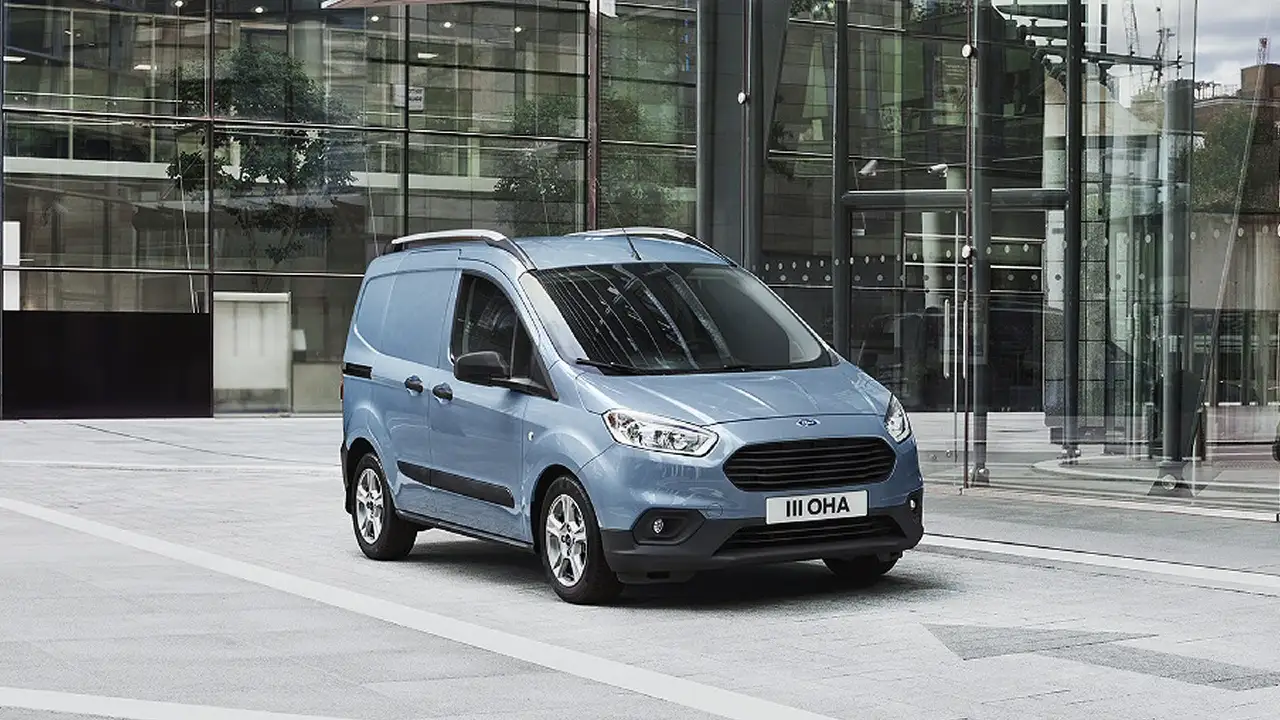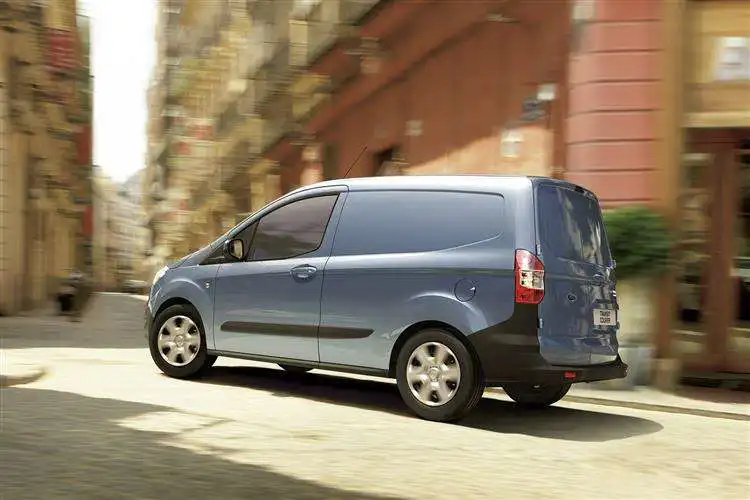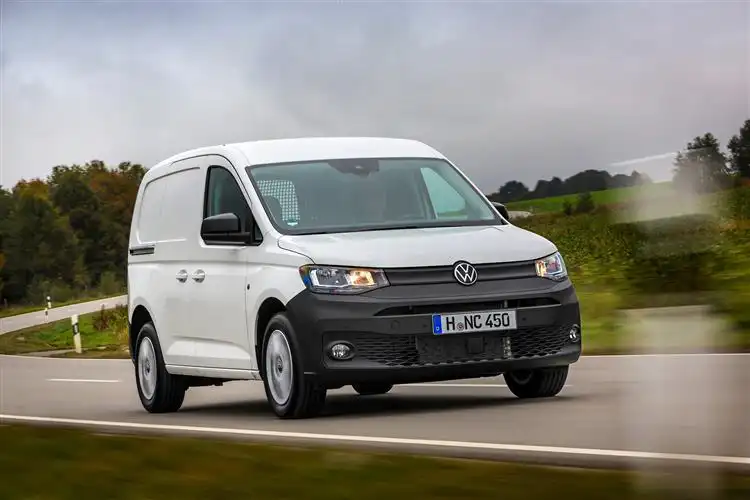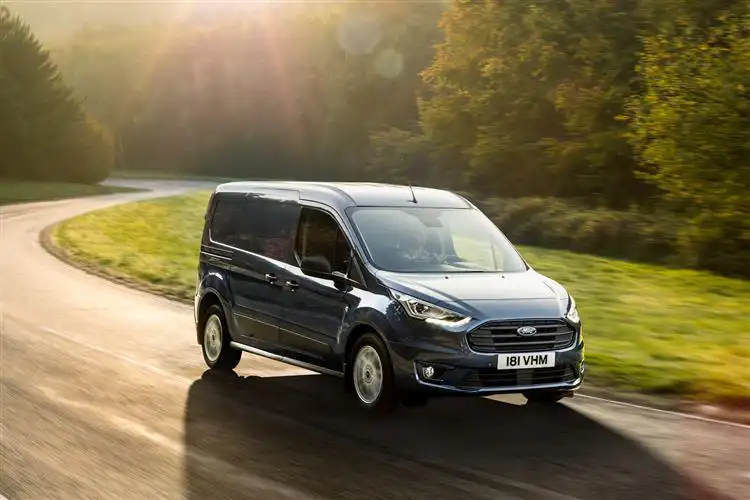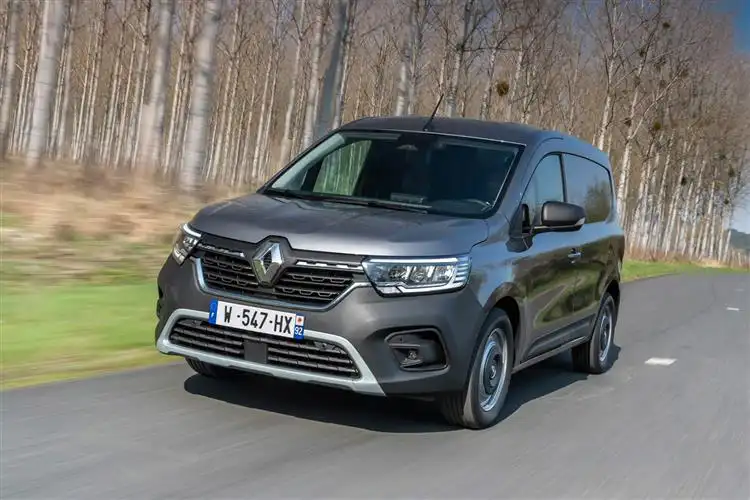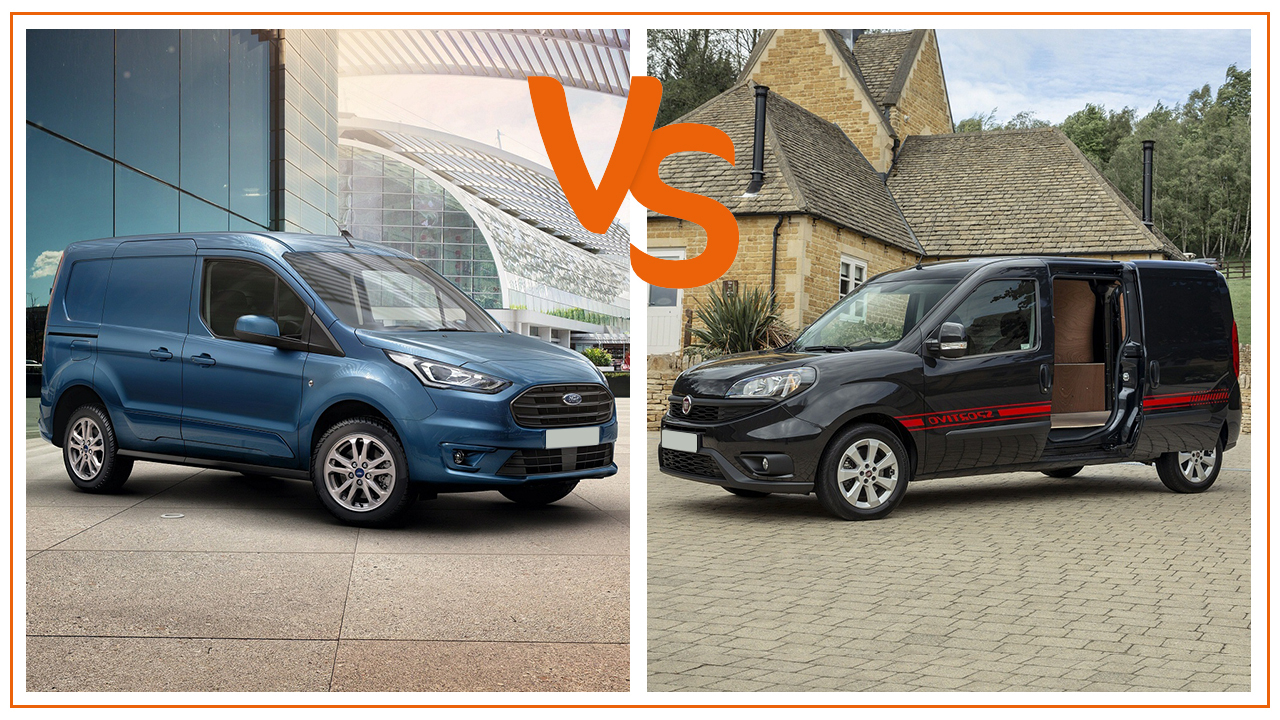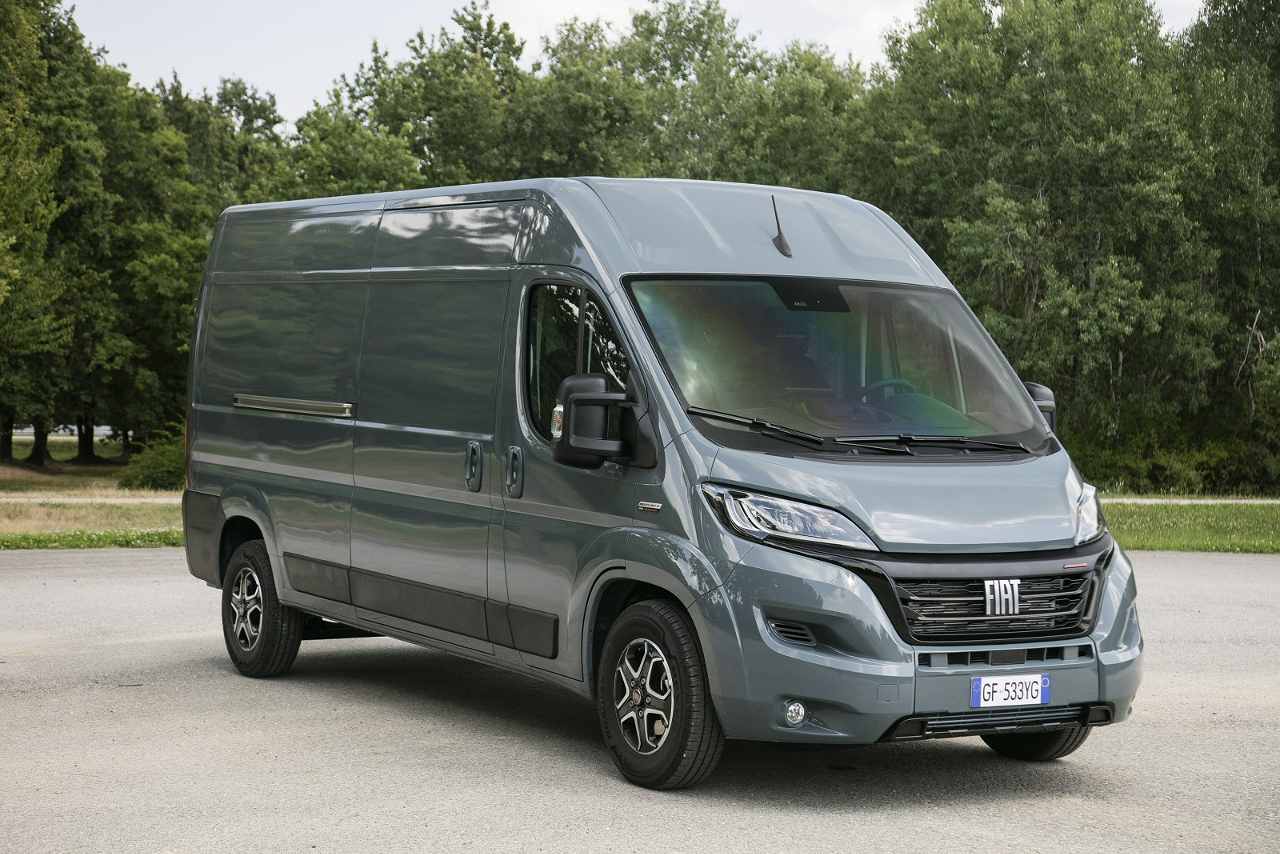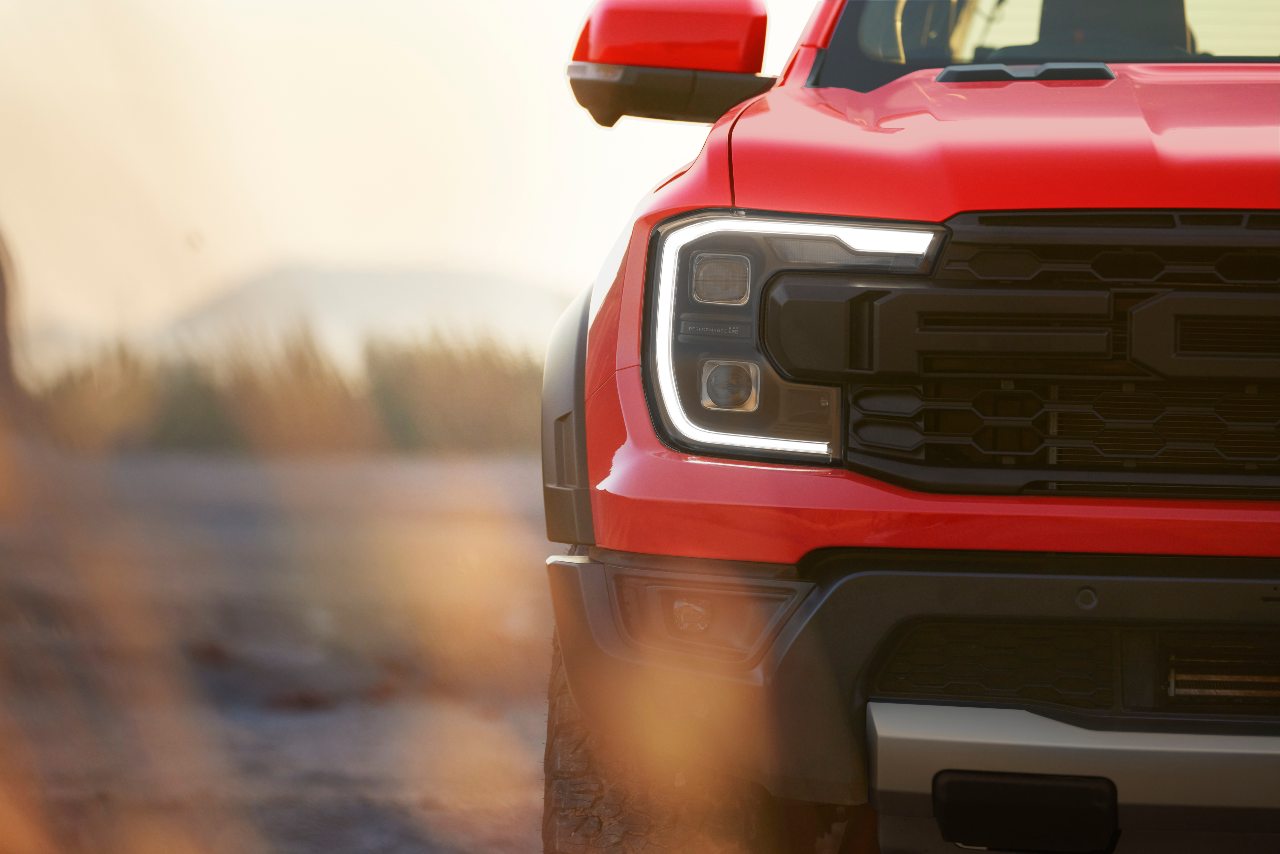MPG and running costs will play a huge part in your decision-making process when you’re looking to lease a new van - after all, you need to know whatever vehicle you choose will offer a good return on investment. But trawling through figures is a hassle, which is why Vanarama Van Expert Tom Roberts has pulled together a list of the top 5 most economical small vans by MPG.
As strange as it might sound, small vans come in all shapes and sizes, with some capable of carrying heavier payloads than medium vans. The small van sector is also swelling with new electric versions of staple vans and even a few new petrol versions (a rarity in the van market). Diesel, however, remains the go-to fuel of choice - even with the rising prices.
I'm going out on a limb here, but I feel like the Stellantis Group small vans (Citroen Berlingo, Peugeot Partner, Fiat Doblo & Vauxhall Combo) changed how we look at small vans in general. Before the latest Citroen Berlingo launched in 2019 (and started hoovering up every van award it could), vans like the Ford Transit Connect & Volkswagen Caddy (both very car-like in their looks and driving styles) were what I thought of as small vans, with their smaller payloads, smaller cabins & smaller engines.
Now, small vans more typically look like scaled down medium vans. Their cabins are bigger, packed with storage cubbies and generally feel like the interiors of commercial vehicles rather than large cars. But the most important place they've improved is the engines. Without good engines, payloads would not be high and the vehicles would be inefficient to run.
And that’s how we get to the crux of this article. Return on investment is crucial when it comes to choosing a van, and one of the best ways to establish if a vehicle will be cost-effective is to check out its miles-per-gallon (MPG) ratings. No one wants to go digging through brochures trying to find them (apart from me), so here are the top 5 small vans ranked by MPG.
Our Top 5 Most Economical Small Vans
Ford Transit Courier
57.6 mpg
When I last carried out this exercise, the clear winner was the Ford Fiesta Van. Sadly, this great little van is no longer in production, but Ford still takes the top prize of producing the most economical small van with the Transit Courier when it’s fitted with the 1.5-litre 75PS diesel engine. Although the Duratorq engine has been with us for some time now, it still leads the pack with its efficiency and benefits from a reputation for durability and reliability. It’s clean too, with CO2 emissions quoted at 135 grams per kilometre (g/km).
Volkswagen Caddy Cargo
57.2 mpg
The latest Volkswagen Caddy isn’t just a pretty face - it’s an efficient thing too, only just losing out to the Ford Transit Courier by a hair. The excellent 57.2mpg figure is achieved by the 102PS Euro 6D compliant 2.0-litre TDi unit (which is actually slightly more economical than the 75PS version). Volkswagen has been using 2.0-litre TDi engines in its cars and vans for a long time now but don’t think for one minute that these engines are dated. They’re new and feature state-of-the-art technology, including a ‘twin dosing’ system in its Adblue delivery, reducing emissions to achieve an excellent CO2 output of just 127g/km.
Ford Transit Connect
55.4 mpg
The Connect uses the same engines as the Courier, so it’s not surprising that this ‘larger’ small van comes close to our winner in the small van economy stakes (its additional weight and size bringing the figure down just a little). It’s almost as clean when it comes to CO2, emitting just 138g/km and, although these days 75PS doesn’t sound like a huge amount of power, the torque output of 220nm is high for a small vehicle.
Renault Kangoo
53.3 mpg
Having won the coveted International Van of the Year award in 2023, you’d expect the new Renault Kangoo not to disappoint when it comes to fuel efficiency, and you’d be right - the 1.5-litre Euro 6D diesel engine puts the van in a very creditable 4th place. With an output of 95hp, the Kangoo is capable of accelerating to 62mph in 13.6 seconds and, where the law allows, achieving a top speed of 102mph. Although not quite top of the class when it comes to CO2 emissions, the van still manages an excellent 139g/km. These attributes, along with the excellent fuel economy and 2-year / 24,000-mile service intervals make the Kangoo a compelling proposition for those looking to lease a new small van.
Citroen Berlingo / Vauxhall Combo / Peugeot Partner / Fiat Doblo / Toyota Proace City / Fiat Fiorino
51.4mpg
It looks like there are lots of joint winners in 5th place here, so I’ll explain. All except the Fiat Fiorino are based on the same platform, and are manufactured by the Stellantis group (including the Toyota which is the result of a commercial agreement between the two companies). There are slight differences in some of the official fuel consumption figures but, because the Berlingo and Partner have identical numbers, I’ve taken these to represent them all. The Fiorino is a completely different van, but coincidentally has exactly the same MPG figure.
The Stellantis lookalikes most economical engine is the 102hp version of the 1.5-litre diesel engine, which conforms to the very latest Euro 6.3 emission standards and outputs CO2 emissions of 144g/km. The torque output sits at an excellent 250nm, even greater than that of the Ford Transit Connect. Considering that it’s usually engines with a higher cylinder capacity that achieve the best torque output, this is a great result from a relatively small unit - more evidence of its efficiency.
The Fiat Fiorino is now one of the smallest vans out there, so it’s probably not surprising that it features in the list of the Top Small Vans by MPG. Its 1248cc diesel engine is available at outputs of 80hp and 95hp, and the MPG figures are identical for both. Conforming to Euro 6d emission standards and including ‘start-stop’ technology, this little van can still sprint to a top speed of over 100mph (where permitted) and with a CO2 figure of 137g/km, it’s technically got green credentials too.
How Is MPG Calculated?
The stated MPG ratings used in this article are the official WLTP (Worldwide Harmonised Light Vehicle Testing Procedure) figures that all manufacturers have to quote in their promotional material. All vehicles are put through the same tests to allow potential customers to make ‘like-for-like’ comparisons between models. Head here to find out more about WLTP.
It’s important to bear in mind that lots of real-world factors can bring this figure down when a small van is in daily use. Payload being carried, weather conditions and driving style are all impactful influences that vary on almost every trip, which means the real value in these quoted MPGs is for benchmarking one van against another.
Although there are different cycles quoted in a vehicle’s test figures, we’re going to compare ‘Combined’ figures. Some manufacturers will quote a ‘best case’ and ‘worst case’ combined figure, so to make a fair comparison I’ve quoted a midpoint between these. All CO2 emissions ratings I'll mention are also taken from the stated combined cycle figures.
As an interesting side note, WLTP figures are generally lower than the old NEDC official stats. This doesn’t mean that the vans have become inefficient, it’s just that a new way of calculating consumption has been introduced.
Tom’s Takeaways
The UK Government's declared strategy that combustion engines will cease being sold by 2030 in favour of electric vehicles means that MPG ratings now have a shelf life of only 7 years. But a lot can happen in 7 years and if you're choosing a new van to drive right now then fuel costs are naturally a key deciding factor.
The vans above are the best for MPG in the small van sector, but what's best is that you have a range of choice here. If you want a small van that doesn't break the bank, you've got the Fiat Fiorino. If you need a small van with a big loading bay for delivery driving, then pick one of the Combo / Berlingo family of vans. Or perhaps you're looking for a strong tried and tested van to see out the next few years, that's your Ford Transit Connect.
My point is that the small van sector is as rich in choice as the entire van sector itself. You'll find a van that works for you and for your business here. Finally, remember, just because a van calls itself a 'small' van, doesn't actually mean it will be small. Just take a look at the Stellantis Group vans & you'll see what I mean!
If you need something with more space that still has great fuel economy check out our expert picks for the most economical medium vans, or head to the Vanarama van blog for more helpful content.
Small Economical Vans By MPG FAQs:
Which fuel types give the most MPG and why?
Diesel vans are usually more economical than their petrol counterparts, because diesel fuel produces more energy than the equivalent amount of petrol and the combustion process is more efficient.
Does my driving affect my van’s MPG?
Absolutely! Hard acceleration and braking eat into your precious and expensive fuel.
How can I drive more economically and save fuel?
Smooth driving, anticipating when you may have to brake and employing gentle acceleration will all reduce fuel consumption. Instead of cruising at 75mph on the motorway, try dropping back to 60mph. On a long trip you’ll definitely notice that the fuel gauge drops more slowly.
You can read our top tips on getting the most economy out of your van driving to help save fuel.
What is the difference between WLTP and NEDC?
WLTP superseded NEDC (New European Driving Cycle, which dated back to the 1980s) to provide customers with MPG figures that would be closer to those achievable with real-world driving. All manufacturers had previously suffered bad publicity when drivers who assumed that they would achieve 68mpg from their new van or car were getting closer to 50mpg. Where NEDC figures were generated using just a single driving cycle, WLTP uses dynamic cycles depending on the type of vehicle being tested. The distance covered during the test is more than doubled and the fitment of optional equipment can be taken into account.
What are Euro 6 standards and why do they matter?
With the advent of low emission zones in our towns and cities, a van that doesn’t comply with Euro 6 or above regulations will find it increasingly difficult to enter these areas without some sort of financial penalty. This is why it makes sense to lease a new van - you can be sure that it will comply with the latest rules, and, because you hand the van back at the end of the lease and perhaps decide to lease a new one, you’ll never have a van that is in danger of incurring charges. And, if zero emission zones become more commonplace, you could look at leasing a new electric van to be completely future proof.
Still have questions about leasing a van? Check out our handy guide to van leasing here, or check out what else is on offer on our van lease deals page.

